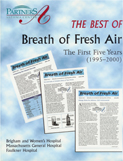Breath of Fresh Air: Feature Articles
Chapter 15: Poverty and Asthma
The burden of asthma is not borne equally throughout this country. This inequality in disease severity became clear when researchers investigated deaths due to asthma. Approximately 5000 persons die of asthma each year in the United States, an annual risk of approximately 1 in 400,000 persons. However, the risk of death among African Americans is three-fold greater than among whites in America, and the differences widened throughout the 1980s. |
In the United States, the risk of death from asthma is three-fold greater among African Americans htan among whites. |
|
|
What accounts for these differences? Although it is possible that there are genetic differences in asthma among different races, most evidence points to poverty as an important cause of disease severity in asthma (as it is in many other diseases). One study in New York City provided striking results as to the importance of income in determining the severity of asthma in the population. The investigators looked at hospitalizations for severe asthma among different neighborhoods in New York City, as distinguished by different zip codes. The frequency of hospitalizations for asthma differed as much as 16-fold from one zip code to the next, and the lower the average income of the population in any particular zip code area, the more frequent the need for hospitalization for severe asthmatic attacks. Persons of color have lower average incomes that whites and have more severe asthma and a greater risk of fatal asthma. Poverty may well be the explanation. |
Poverty is the most likely explanation for
this disparity between the races. |
|
|
One can speculate as to why low income might lead to worse control of asthma. There are many possible reasons, and it is likely that more than one reason contributes most of the time. Exposure to the things that stimulate asthma is probably greater in poor households. Cockroaches in inner city homes, air pollution in industrial neighborhoods, cigarette smoking and second-hand smoke exposure, gas and other chemical fumes, lack of air conditioning, and inability to modify the home environment (for example, unable to take up a bedroom carpet or correct water leaks into a moldy basement) are some of the ways that poverty might predispose to worse asthmatic inflammation of the bronchial tubes. |
Poverty can affect lung health in many ways. |
|
|
Health care is often less adequate for the poor. Physicians may not be available, transportation to and from medical sites and child care to make these trips possible may be lacking, and family traditions emphasizing preventive medical care may be weakly rooted. Medications may be too expensive to afford. Most people having to choose between food and preventative medications would choose food to eat. Other medical problems may get in the way of good asthma care, as may psychosocial problems such as alcoholism, drug abuse, and mental depression. Poverty is also linked to lower levels of education. Lack of understanding about asthma and its treatment may cause further risk of severe, undertreated asthma. In too many poor communities, cough and wheeze are accepted as part of normal growing up; medical care may not be sought because it isn't considered necessary, because it isn't available, or because it is too difficult to access. The Partners Asthma Center provides medical care to all who need it, regardless of one's ability to pay. We have also been active as participants in the Community Asthma Program, an asthma outreach program in local Boston neighborhoods (sponsored by the National Institutes of Health). In the end, we are all neighbors working together to breathe freely. |
In the end we are all neighbors working together to breathe freely. |

